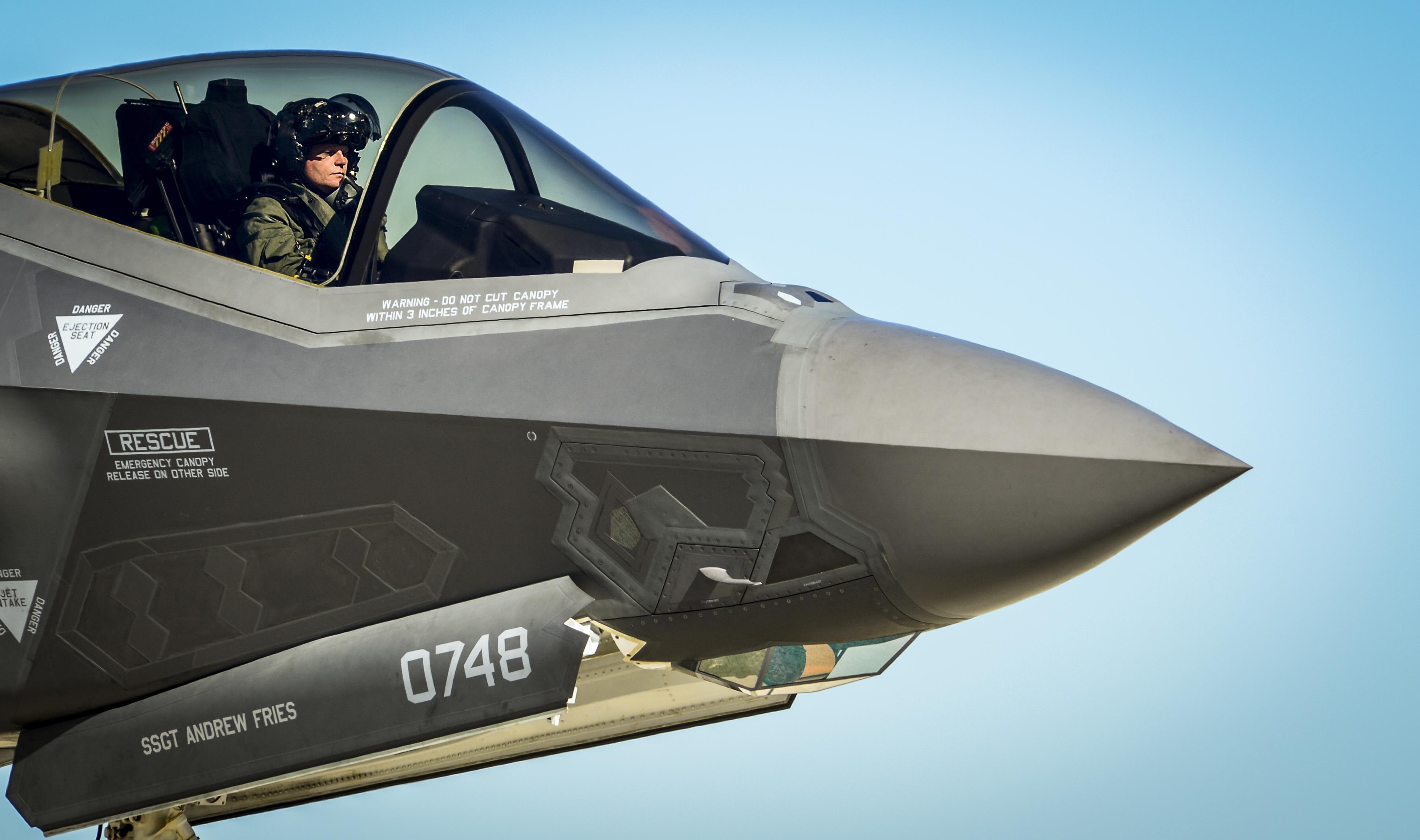An Air Force F-35 Lightning II pilot prepares to refuel Dec. 12, 2013, at Eglin AFB, Fla. Air Force photo by SrA. Christopher Callaway.
The Air Force wants more airmen, but exactly how to get there is largely in the works.
Chief of Staff David Goldfein told USA Today late last year he wants to see 350,000 Active Duty airmen by 2022 or 2023.
But how does USAF get there and where should it grow its personnel
A USAF spokesperson told Air Force Magazine that “while increases will be made to all Air Force specialties experiencing long-term shortages, the increased Active Duty endstrength will give us greater capability in key areas such as:
- Fighter pilot training capacity
- Remotely piloted aircraft manning and right-sized RPA squadrons
- Nuclear communication, command, and control
- Intelligence capacity, especially for targeting and exploitation
- Space and cyber manning
“We need to grow in a balanced way,” Deborah Lee James said, during her final appearance at an AFA-sponsored, Air Force breakfast on Jan. 6.
She said the Air Force’s “get well plan” for the RPA community, includes doubling training efforts, using the Guard and Reserve more often, increasing retention bonuses, expanding basing structures, building a new RPA base, and allowing enlisted pilots into the RPA force. Asked about what is meant by right-sized RPA squadrons, a USAF spokesperson told Air Force Magazine it’s still too “premature to speculate on how potential personnel increases might affect the RPA enterprise.”
On cyber, James said that by 2019 the Air Force will grow its cyber force by 3,000 airmen in the National Guard across 34 states.
She also noted that with the oldest aircraft fleet in its history, USAF will need “more maintainers at all levels.”
The Air Force is trying to reach its new manpower goals through higher salaries, retention bonuses, quality of life and service, and widening diversity of potential airmen. As an example of increasing that diversity, USAF has been working for over a year to get to 30 percent in female applicants to the force and it already loosened tattoo and medical requirements.
James said when she first took over, she was briefed that the “Air Force of the future was going to be a smaller Air Force.”
Several factors culminated in this vision, which at one point “made sense” but no longer does, James said.
- “Topline pressures” of the budget: “You can’t afford everything and you have to make tough choices,” James said. “Reducing people was one of those early choices.”
- The Air Force was forced to take funding from personnel in order to pay for much-needed modernization efforts.
- “World conditions” implied USAF could “get by,” the belief then being the wars in Afghanistan and Iraq were drawing to a close and the US would be deploying overseas less often.
Russia’s engagements in Crimea, China’s engagements in the South China Sea, the rise of ISIS, and North Korea’s growing threats are a few examples of what changed that vision, according to James.
During her final public appearance Jan. 11, James mentioned that in her recent travels, she found USAF to be “short everywhere” and that future needs necessitate a larger force.
To watch the full video of James’ AFA speech, click here.
The Air Force’s Fiscal 2017 budget places an emphasis on training as the service looks to grow the force and fill key capability gaps, Maj. Gen. James Martin, the deputy assistant secretary of the Air Force for budget, told reporters Tuesday. Recent budget pressures forced the Air Force to take “drastic action” and make tough choices, including reducing endstrength, and only now is the USAF beginning to “right size” the Total Force to cover shortfalls in areas like cyber, nuclear, maintenance manpower, and remotely piloted aircraft, Martin said. People, readiness, and modernization make up the biggest pieces of the Air Force budget, “so when forced to take sharp reductions, we simply can’t avoid impacts in these areas.” In Fiscal 2017, USAF will add about 100 basic and technical training instructors, which will support an additional 2,100 new airmen over last year’s level. The budget also supports increases to Officer Training School, the Air Force Academy, and ROTC, and includes a request for retention incentives in critical areas, Martin said. Additionally, the Air Force will begin integrating enlisted pilots into the RQ-4 community, he said. The Fiscal 2017 budget “continues the recovery and gives us a larger and better-equipped force,” Martin said.
